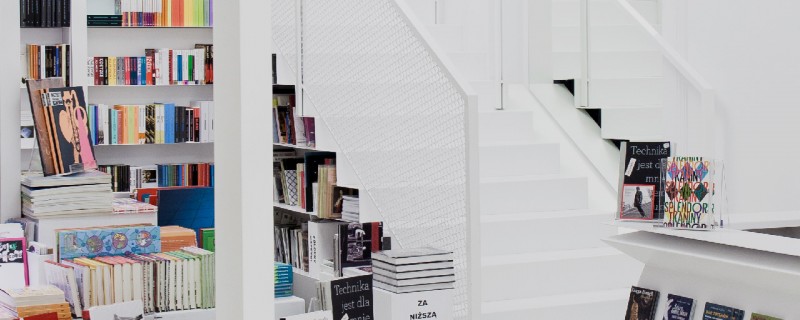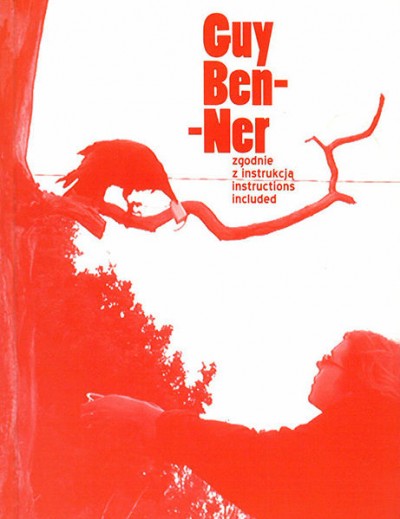
E-bookshop
edited by: Magda Kardasz
graphic design: Maciej Sikorzak, Dorota Karaszewska
publisher: Zachęta - Narodowa Galeria Sztuki
ISBN: 978-83-60713-18-1
Several years after this event and following a number of visits to Warsaw, we open an individual exhibition by the artist under the title “ Instructions Included”. In addition to the project known from Venice, the artist presents two earlier works: Elia (2003) and Wild Boy (2004), and also the film Stealing Beauty completed in 2007, as well as his newest film Second Nature, which had its premiere at the Liverpool Biennial just shortly before its screening in Zachęta. The artist is known for his returning to the themes that interest him in successive projects in order for them to emerge in an ever-more mature form. What interests him? Is the contrast between the primordial wildness characteristic of the human race and the processes of civilization and education moulding that wildness to social norms still important?; the position of the artist in the contemporary world, his relationship to other life roles (the problem common to every creator of the need to preserve individuality against the need to fulfil oneself in the role of family father); and lastly formal and thematic cultural references: above all to literature, philosophy, film and the history of contemporary art.
In Guy Ben-Ner’s the performative element is important: in his films or video installations he appears himself, as often do members of his nearest family: his wife, Nava, and children: Elia and Amir. The individual works formally relate to different film genres: documentary film (the film Elia which appears as a nature film from afternoon television); educational film (the film instruction accompanying the spatial installation Treehouse Kit); or even other types of fictional film, with special attention to early cinema (the silent film Wild Boy, which is reminiscent of the slapstick comedies of Harold Lloyd, Buster Keaton or Charles Chaplin, in terms of its content makes direct reference to François Truffaut’s 1970 classic L’Enfant sauvage). In its turn, Stealing Beauty is a film which begins like a soap opera, but ends like a television recording of a television discussion between specialists in the fields of philosophy, politics and education. The artist’s newest work Second Nature falls between genres: a classic educational film where the heroes are animals endowed with human traits, a philosophical tractate and a family film with trained animals in a Walt Disney style. Some of the artist’s works are video-installations, others link the film media with spatial arrangements (with elements of sculptural and environment installations), while in the film Elia appear, in the artist’s own words, “living sculptures”. All Ben-Ner’s works are situated on a cusp between different genres and styles, a mix which is also reflected in their thematic content. For they blend humour with seriousness, and scenes from everyday life with quotes from favourite works of literature, philosophy, films and works of visual art. Ben-Ner’s films often look like recordings of performances, where the artist deliberately reveals the secrets of his techniques, a lack of perfection in the montage, the cheapness of shoddily made decorations; he builds complex stories through the use of a few simple props, often objects of everyday use, which for the time of the film change their function. He films the scenes in his flat or in untouched natural surroundings. He invites his own children to join him in the creation of films not addressed to children. Convention, the ironic blurring of boundaries, games serving to uncover the hidden, not always happy content, an intentional disturbance of the bases of thematic decorum: these are the features particular to the work the artist has produced to date.
The question as to the necessity of continuously adhering to conventions, of acting in accordance with the “Instructions Included” of required social roles, moral norms or one’s own expectations of oneself; a longing for freedom and simultaneously a putting into doubt as to whether escaping from conventions is possible seems to be the most important and constantly present theme in Guy Ben-Ner’s art. In his films, the artist frequently shows processes of instruction and education, often with a surprising effect.
In his works, Guy Ben-Ner often incarnates different roles: a sailor on a reconstructed ship; Robinson Crusoe — a castaway on a deserted island or a father accidentally imprisoned under his little son’s bed (a metaphor for the artist seeking creative isolation); a pioneer and builder, able to create everything from nothing (also an interesting metaphor of an artist); an ostrich guiding its flock (the species is known for the fact that the male also looks after the young); the foster father of a wild boy - Buster (named after Ben-Ner’s favourite artist Buster Keaton); a father who is not the paradigm of virtue giving his children wise counsel on the themes of life, economy and true values.
Although, obviously all the projects described deal with different issues, the autobiographical element, ever-repeated new attempts to observe his own existential situation as person and artist, appears in a less or more direct way in all the works the artist has produced to date. Guy Ben-Ner’s comic-sad works encourage contemplation and self-reflection, and evade simple diagnosis or easy solutions. They deal with the necessity and curse of having to comply with instructions.
